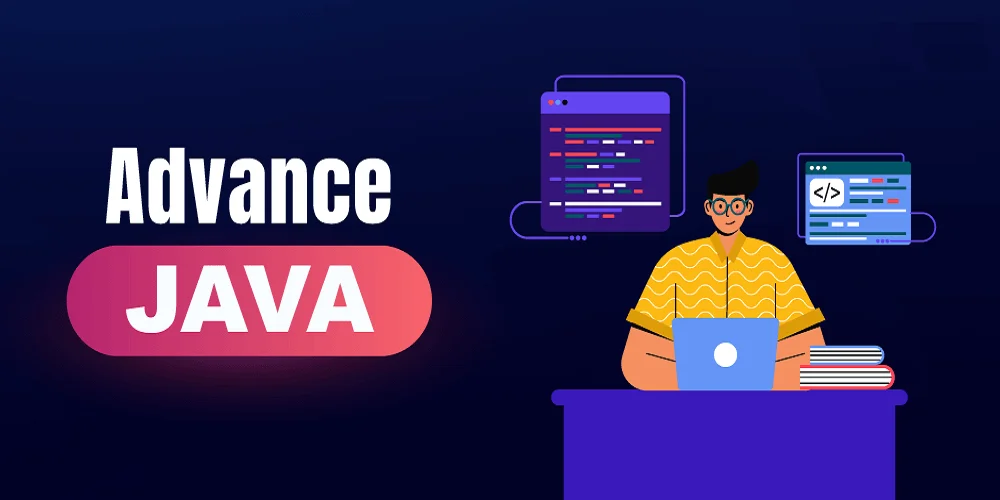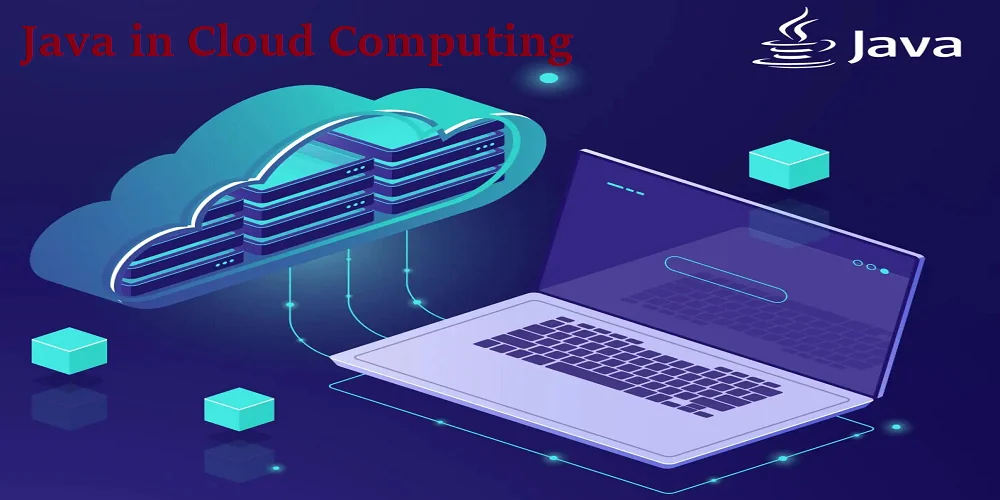Introduction: Basic Understanding of Java for Android Programming
Java knowledge is core when developing Android applications. In Android programming, Java forms the base, so it is very essential to understand the basics of Java for Android programming. The following article takes the reader right from the basic Java syntax to advanced concepts such as multithreading, exception handling, and some key Android components. By mastering Java tools and technologies concepts, you’ll be well-equipped to create functional, efficient, and robust Android apps.
Java Basics: Overview
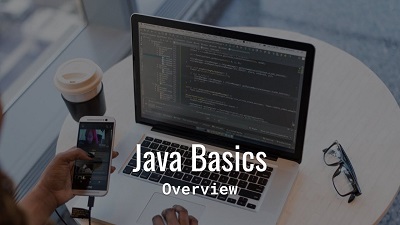
1) Variables and Data Types
In Java, a variable is a container for storing data values. Java is statically typed. This means that a variable must be declared with its data type before it is used. Traditional data types include:
- int: for integers.
- float: for floating-point numbers.
- char: for characters.
- boolean: for true/false values.
Example:
int age = 25;
float price = 19.99f;
char grade = ‘A’;
boolean isAvailable = true;
Some of these basic data types are important to understand as they form the building blocks for managing data within your Java for Android programming application. For instance, an integer can be used to manage the age of a particular user, but maybe you want to handle prices with a float-type variable in an e-commerce application. Characters can be useful for single-letter inputs or simply for entering initials, while Booleans are ideal for the decision-making process. You may like it to verify whether a user is logged in or not.
2) Operators
Operators perform operations with the variables and values. Java has an extensive set of operators that cover the following:
- Arithmetic operators (+, –, *, /, %): These are the operators for performing arithmetic operations—addition, subtraction, multiplication, and division.
- Relational operators (==, !=, >, <, >=, <=): They are used in comparing two values and help massively in decision-making during coding.
- Logical operators (&&, ||, !): Enable complex decision-making since several conditions can be put together.
Example:
int a = 10, b = 20;
int sum = a + b;
boolean result = (a < b) && (a > 5);
3) Control Structures
Control structures manage the flow of a program. Key structures include:
- If statements: Execute code based on a condition.
- Switch statements: Execute code based on the value of a variable.
- Loops: for, while, and do-while loops for repeated execution.
Example:
if (a > b) {
System.out.println(“a is greater than b”);
} else {
System.out.println(“a is less than or equal to b”);
}
for (int i = 0; i < 5; i++) {
System.out.println(“i: ” + i);
}
4) Arrays and Strings
Arrays, which store many values within a single variable. Strings are also a very important Java object; Strings tend to be character sequences. Arrays and strings are just some of the many foundational data types that you must use in managing collections of data and text information within your mobile app. For example, arrays can store the ratings by users, while strings can have any user inputs, messages displayed to the users, and so on. Knowing exactly how one can efficiently work with these structures so that they will be able to work on complex data management tasks within their Android application.
Array example:
int[] numbers = {1, 2, 3, 4, 5};
for (int num: numbers) {
System.out.println(num);
}
String example:
String message = “Hello, World!”;
System.out.println(“Message length: ” + message.length());
5) Classes and Objects
Java is known as an object-oriented programming language, meaning it uses classes and objects. A class defines the characteristics and behaviors: in simple terms, it offers a blueprint of the objects. A class and object help build your code in a more modular or reusable fashion. For example, one could include definitions of users with attributes including name, email, age, and methods of updating the information of the user. This is a paramount OOP concept in organizing your code and making it maintainable.
Example:
class Car {
String model;
int year;
void displayInfo() {
System.out.println(“Model: ” + model + “, Year: ” + year);
}
}
public class Main {
public static void main(String[] args) {
Car myCar = new Car();
myCar.model = “Toyota”;
myCar.year = 2020;
myCar.displayInfo();
}
}
6) Inheritance and Polymorphism
Inheritance and polymorphism are advanced principles that allow more sophisticated programming paradigms. For example, you could have a base class Vehicle and subclasses Car and Bike with specific methods, and properties yet both inheriting from Vehicle.
- Inheritance: This designs a manner in which one class can inherit fields and methods from another. It makes it possible to establish a relationship in which one class is a superclass of the other, allowing implementation reuse and preventing redundancy.
- Polymorphism: The ability of objects to be treated as instances of the parent class, with the overriding method giving implementations that are specific. This feature brings huge flexibility to your application and makes it integrated with a lot of possibilities.
Example:
class Animal {
void sound() {
System.out.println(“Animal makes a sound”);
}
}
class Dog extends Animal {
@Override
void sound() {
System.out.println(“Dog barks”);
}
}
public class Test {
public static void main(String[] args) {
Animal myDog = new Dog();
myDog.sound(); // Outputs: Dog barks
}
}
7) Exception Handling
Exception handling is a mechanism to manage errors that can occur while running a program using try, catch, finally, and throw. Exception handling is crucial in building a robust and marketable Java development. Proper guidance of Java for Android programming will make your application safely. It will be able to handle some kind of unexpected situation, say network failure or invalid input, without crashing.
Example:
try {
int divide = 10 / 0;
} catch (ArithmeticException e) {
System.out.println(“Cannot divide by zero”);
} finally {
System.out.println(“This block is always executed”);
}
Java for Android Programming
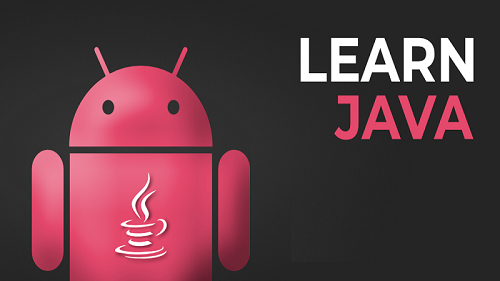
1) XML Layouts
XML is used to define the user interface. Each activity has a corresponding layout file. The XML layouts separate the design from the code; thus, it makes your application easy to handle. By learning how to design the UI in XML, it becomes very simple to achieve flexible and scalable user interfaces on your own. For instance, buttons, text fields, and images may be defined in an XML layout that the corresponding activity manipulates.
<LinearLayout xmlns:android=”http://schemas.android.com/apk/res/android”
android:layout_width=”match_parent”
android:layout_height=”match_parent”
android:orientation=”vertical”>
<TextView
android:layout_width=”wrap_content”
android:layout_height=”wrap_content”
android:text=”Hello, Android!” />
</LinearLayout>
2) Activities
An activity, in the world of Java for Android programming, is a single screen of your application. It is here that you design the UI and determine what to do on particular user interactions. It is very important to understand activities because they stand as the core of interaction with the user in your application. Each activity is built on a single screen and handles the logic and all lifecycle events about that screen. In Java for Android programming, mastering activities means that you can create fluent, intuitive flows of navigation within your app.
public class MainActivity extends AppCompatActivity {
@Override
protected void onCreate(Bundle savedInstanceState) {
super.onCreate(savedInstanceState);
setContentView(R.layout.activity_main);
}
}
3) Intents
Intents are messaging objects that request an action from another app component. Intents provide for mechanisms of passing data between activities, as well as specifying activity navigations or background service trigger modes. For example, a new activity may be started through an intent that calls for it to open when a user clicks on a button, or you could pass data from one screen to the other.
- Explicit Intent:
Intent intent = new Intent(this, AnotherActivity.class);
startActivity(intent);
- Implicit Intent:
Intent sendIntent = new Intent();
sendIntent.setAction(Intent.ACTION_SEND);
sendIntent.putExtra(Intent.EXTRA_TEXT, “This is my text to send.”);
sendIntent.setType(“text/plain”);
startActivity(sendIntent);
4) AsyncTask
AsyncTask performs background operations and updates the UI thread. It is useful for short tasks. An AsyncTask makes it easy to handle background operations, for example, a network request or heavy computation, that happens without blocking the user interface. It allows long-running actions to be conducted in the background without blocking the main thread, thus designing for a seamless experience in the occurrence of such actions.
private class MyTask extends AsyncTask<Void, Void, String> {
@Override
protected String doInBackground(Void… params) {
// Background work
return “Done”;
}
@Override
protected void onPostExecute(String result) {
// Update UI
textView.setText(result);
}
}
5) Key Libraries and APIs
- Retrofit: Retrofit is used for making HTTP requests in Android applications. It simplifies network operations.

Retrofit condenses all the complexities in network operations into a simple way of fetching data. For instance, data fetched from web services or APIs. For example, you may use Retrofit to fetch data from REST API and then display it within your application, without thinking about the overhead networking code.
Retrofit retrofit = new Retrofit.Builder()
.baseUrl(“https://api.github.com/”)
.addConverterFactory(GsonConverterFactory.create())
.build();
GitHubService service = retrofit.create(GitHubService.class);
Call<List<Repo>> repos = service.listRepos(“octocat”);
- Picasso: Picasso handles image downloading and caching.
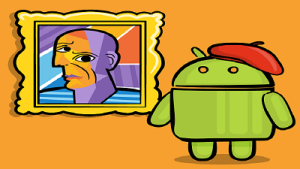
Picasso greatly simplifies image loading in Android apps, since it handles the process of downloading, caching, and displaying images. It’s more beneficial to the applications that have dynamic content concerning images so the images load optimally and seamlessly, without any performance cost.
Picasso.get().load(“http://example.com/image.jpg”).into(imageView);
Java Concepts and Their Android Applications
| Java Concept | Description | Android Application |
| Variables and Data Types | Store data values. | Used for handling data like user inputs, preferences, etc. |
| Operators | Perform operations on variables and values. | Used in conditional statements, calculations, etc. |
| Control Structures | Manage the flow of the program. | Used for handling user interactions, navigating activities, etc. |
| Arrays and Strings | Store collections of data and sequences of characters. | Used for data manipulation, storing lists of items, etc. |
| Classes and Objects | Define blueprints for objects. | Represent app components, data models, etc. |
| Inheritance and Polymorphism | Allow for hierarchical relationships and method overriding. | Enable reusable and flexible code structures. |
| Exception Handling | Manage errors during execution. | Ensure app stability by handling runtime exceptions. |
| Activities | Represent a single screen in an app. | Create and manage the app’s user interface. |
| XML Layouts | Define the UI structure. | Design the visual components of activities. |
| Intents | Facilitate communication between components. | Navigate between activities, and share data across apps. |
| AsyncTask | Perform background operations. | Handle network requests, and heavy computations without blocking UI. |
| Retrofit | Simplify network operations. | Fetch data from web services, and APIs. |
| Picasso | Handle image downloading and caching. | Efficiently load and display images in the app. |
Learning Resources and Tips: Your Roadmap to Java for Android Programming Success
Now that you are well-loaded with basic knowledge, we’ll take a plunge into Java for Android programming.
1) Strengthen Your Java Base
There are many resources online that you can use to strengthen your knowledge of Java for Android programming. Here are some suggestions:
- The Official Java Tutorials: A comprehensive resource from Oracle discussing lots of ins and outs about core Java in detail.
- Head First Java by Kathy Sierra and Bert Bates: This is a really interesting book similar to one of its previous editions we discussed in this class.
- Online Courses: Coursera, edX, and Udacity have online courses available of Java for Android programming that are targeted to both beginners and intermediates.
2) Embrace the Android Developer Documentation
Google puts out incredibly comprehensive documentation tailored to Java for Android programming. It’s your one-stop shop for getting in-depth explanations, code samples, and tutorials.
3) Master Android Studio
Beyond this, you will need to become very comfortable with Android Studio. Here are some resources that might help:
- The Android Studio Documentation: This official guide walks you through setup, using, and navigating Android Studio.
- Interactive Tutorials: Android Studio IDE includes interactive tutorials to teach how to create the first Android app.
4) Practice Makes Perfect
The best way to solidify your learning of Java for Android programming is through hands-on practice. Here are some ways to get started:
- Build Simple Apps: Create basic applications, for example, “Hello World” displayed on the app or even a to-do list app. Doing so will get you acquainted with the basic processes involved in developing an Android app.
- Follow Online Tutorials: Follow Android development tutorials on the web There are many Android development tutorials that will take you through creating all manner of apps. Many of them come with instructions, and even code examples that will prove useful to you.
- Contribute to Open-Source Projects: Engaging in open-source projects is such a great learning experience. In the same vein, you may have your projects where you can work with other skilled developers.
5) Join the Android Development Community
Get yourself surrounded by other aspiring as well as experienced Android developers. Here are a few ways of doing the same:
- Online Forums: Ask, agree with a question, and follow the responses at Stack Overflow and the official Android Developer Forums.
- Local Meetups and Events: Find out if there are any local meetups or even internet communities related to Android development. Such groups offer their members a great opportunity to network with other people, share knowledge, and monitor the latest ideas.
Beyond the Basics: Application Development Skills of Java for Android Programming
As you proceed further to learn, delve into the following advanced areas:
1) Advanced Java Concepts
Learn advanced Java development services features, including generics, collections frameworks, and concurrency, that will make your code more efficient and maintainable.
2) Android Architecture Patterns
Learn design patterns for app architectures, such as Model-View-Presenter (MVP) and Model-View-ViewModel (MVVM), to structure your application architecture in a way that allows it to be.
3) Material and UI/UX Design
Master Material Design—the official visual language of Android—so that all the interfaces you create look not only attractive but are user-friendly. Go through the principles of UI/UX design to make compelling, intuitive experiences.
4) Android Jetpack Libraries
Many other Android libraries are provided through Android Jetpack. It provides the developer with pre-built solutions while developing common tasks, which saves time and effort for the developer.
Conclusion
With a fundamental understanding of Java for Android programming, you can develop some very powerful and highly efficient applications. Mastering Java is a very important process in becoming a competent Android developer. Whether it’s about a simple syntax or an advanced theme involving multithreading and network operations; a good command of Java for Android programming will take your development skills and career toward a high trajectory.
READ – Enhance your Java app with Vector Databases
Frequently Asked Questions (FAQs)
1) How does Java help in Android development?
Android development mostly extends from the use of the Java Programming Language. It is used in writing codes for execution within devices that have the Android base. Java for Android programming used to create activities, reacting towards user interactions, and managing data.
2) Do I require a Java course to know Android Development?
True, a general understanding of Java for Android programming is very important before going deep into creating applications; topics include variables and data types, control structures, classes, and objects.
3) Which concepts of Java for Android programming are considered essential?
Important Java concepts include:
- Variables and Data Types
- Control Structures
- Classes and Objects
- Inheritance and Polymorphism
- Exception Handling
- Multithreading and Asynchronous Tasks
4) How do activities work in Android?
An activity defines a single screen and user interface. Activities handle inputs given by the user to the application. And they may start other activities using Intents. Each activity is implemented in Java and declared in an XML-formatted layout file.
5) What do you mean by Intent in Android?
Intents are the messaging objects through which one application component may request actions of another. In other words, they can fire off an activity, service, or broadcast receiver. Intents can either be explicit—a specific component is identified to start—or implicit—permitting the system to determine what is best placed to handle the intent that is sent.
6) What is AsyncTask and when should it be used?
AsyncTask is an Android class done for enabling background operations without burdening developers with spending a lot of time creating threads or handlers. The operation in the background may be used over short ones, like requests over networks or through the database service, so updating from those happens instantly.
7) How do Retrofit and Picasso simplify Android development?
- Retrofit simplifies making HTTP requests by converting your API into a Java interface. It handles the complexity of network operations and parses the response into Java objects.
- Picasso makes it easy to load Android images by managing the download, caching, and displaying images in views efficiently.
Read more:


